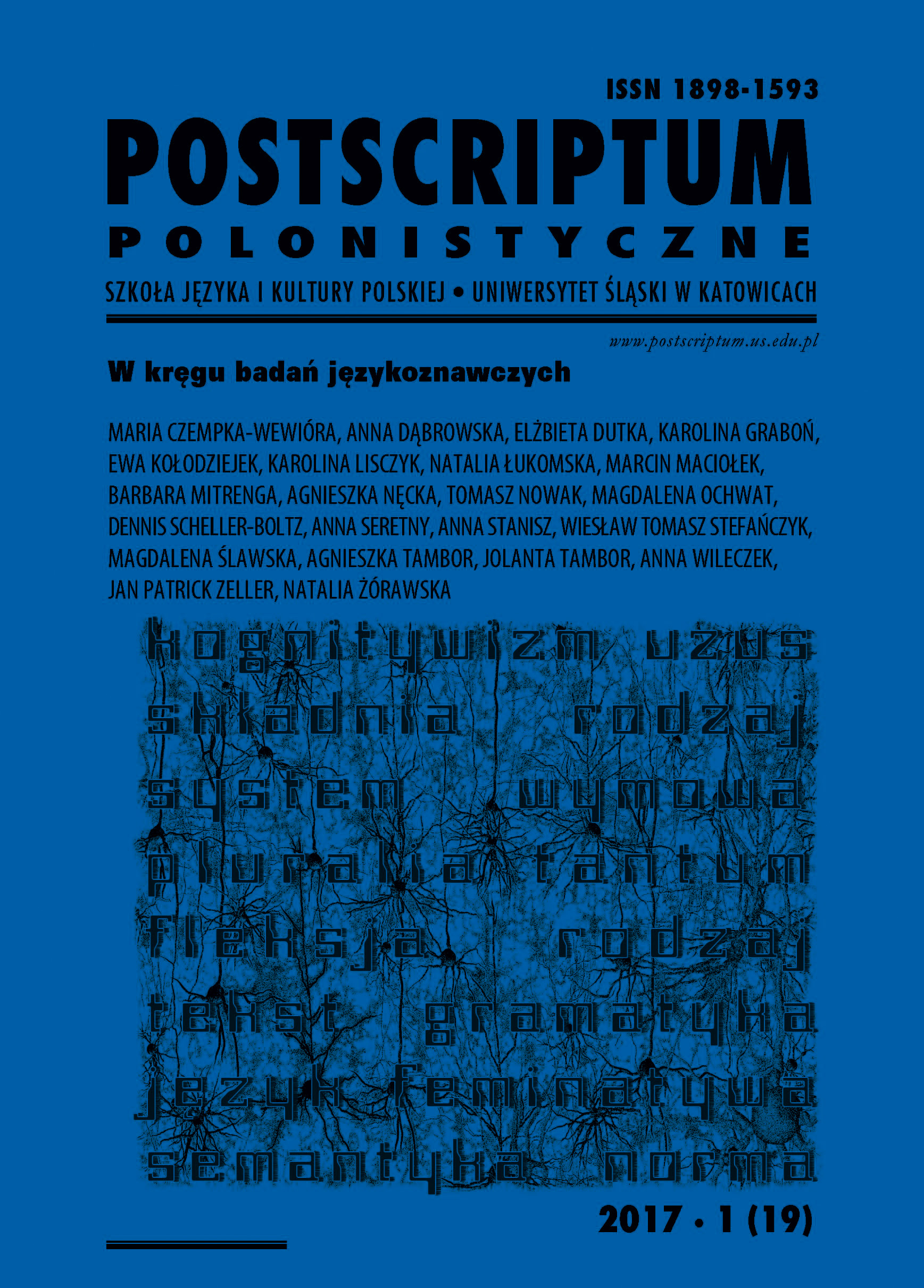Współczesne ujęcia kategorii rodzaju gramatycznego w polszczyźnie a praktyka (glotto)dydaktyczna – wprowadzenie
Contemporary approaches to the practice of determining grammatical gender
and teaching Polish as a foreign language
Author(s): Anna Seretny, Wiesław Tomasz StefańczykSubject(s): Language studies, Language and Literature Studies, Foreign languages learning
Published by: Wydawnictwo Uniwersytetu Śląskiego
Keywords: grammatical gender; noun; Polish language teaching and learning; pedagogical grammar
Summary/Abstract: In contemporary Polish linguistics, there are two approaches to determining grammatical gender classes: the traditional and the contemporar formal. According to the traditional concept, derived from the classical school, the nominative case is the basis for the division into gender classes. In modern Polish language, the traditional approach distinguishes the following classes: masculine, feminine, and neutral and in the plural form there is also the masculine-personal and non-masculine-personal. On the other hand, in the contemporary approach the basis for division into gender classes is the accusative case, and less frequently, the genitive case. In didactic practice however, and especially in teaching Polish as a foreign language, the traditional approach is applied as it is the most transparent, understandable and accessible to learners.
Journal: Postscriptum Polonistyczne
- Issue Year: 19/2017
- Issue No: 1
- Page Range: 71-85
- Page Count: 15
- Language: Polish

